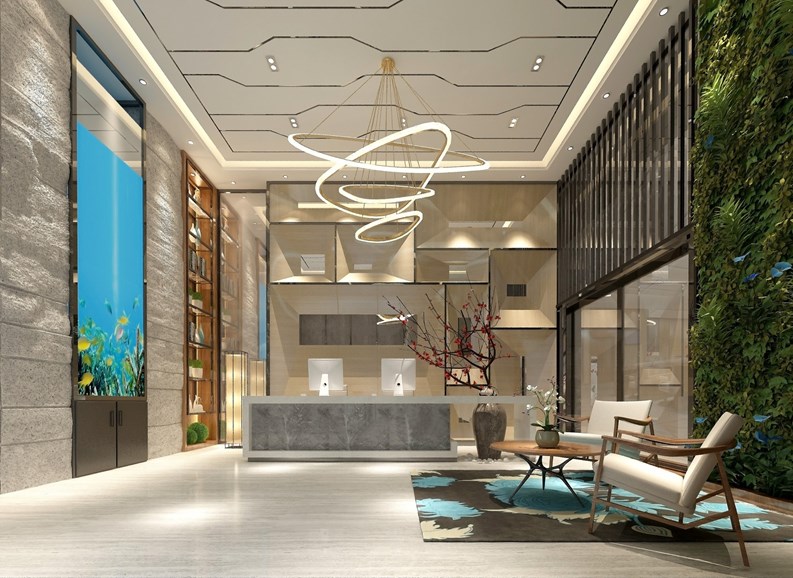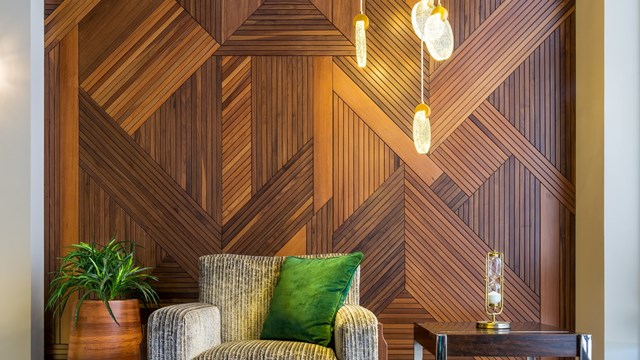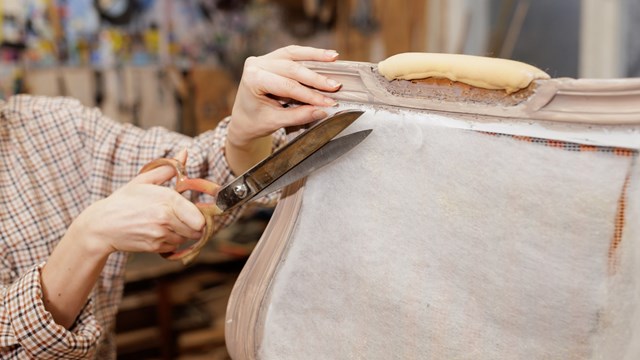The lobby of your building is more than just a transitional space between outdoors and in; it’s an important component in the life of your co-op or condo community. It’s where you enter your home. It’s where your visitors (and potential buyers) have their first impression of your building and the people who live there. And it may be where your community gathers to celebrate or deliberate—so how it’s furnished, organized, and decorated matters.
The Grand Opener
While residents may take them for granted over time, lobby spaces offer an opportunity to signal what that community is about. “A lobby sets the precedent for the welcoming nature of the building and the community that resides within it,” says Toni Ivanov, owner and president of PC5 Company, an interior design firm based in Chicago. “Urban dwellings in buildings with welcoming lobbies have a vast opportunity for increasing their curb appeal. Often with a limited footprint, it’s important to find a way to extend their outside in, to make it warm and inviting while providing a grand presence.”
“The biggest challenge when designing a lobby,” says Marilyn Sygrove, principal of Sygrove Design Associates based in New York City and serving communities throughout New York and New Jersey, “is always consensus of what the design should look like. A simple design survey gives all stakeholders an opportunity to participate in the process. Stakeholders and owners want and in some cases insist on being heard. We think it’s important, too.”
Requirements for lobby design have also evolved over the past few years, notes Tora Corsey, a designer with Arrowstreet Inc. in Boston. “With the expanding influence of working from home, the significance of versatile seating arrangements and backgrounds tailored for video calls has become increasingly pronounced in lobbies and communal spaces. Post-COVID, there’s also a clear preference for environments that foster a sense of community within lounges, reflecting a collective desire for connection. This also helps amenity spaces have a greater presence.”
The Components of Success
Sygrove suggests there are some rules to follow to make designing or redesigning a lobby go more smoothly. She recommends the following as best practices to help a board and community get through what can be an emotionally fraught process:
“First, complete a design survey with the community,” she says. “Design surveys can pose questions like how much seating is necessary in the lobby. You want the right amount, not too much, or too little. It can be a ‘Goldilocks’ situation. The survey should also determine the overall style of the lobby. Does the community desire, say, mid-century modern, or something more traditional with a modern flair? Or perhaps they’d prefer something minimalist?”
Once a direction has been established for the design of the lobby and its component parts, it’s time to start considering those components—everything from wall covering to rugs to furniture and accouterments.
“Natural elements such as stone and wood bridge the gap with nature and provide good bones for walls, ceilings, or floors,” says Ivanov. “The use of marble, terrazzo, and wood panels continues to stand the test of time. High-traffic areas demand well-appointed lighting, industrial and commercial grade paints, wallpaper, and fabrics. Solution-dyed carpets are a must to maintain their color from the sun, elements, and spills.”
Sygrove says there are many practical considerations when it comes to lobbies and entryways. “We shy away from purchasing furniture from retail stores wherever possible. Retail stores cater to private homes—residential use. This furniture is not intended to hold up the way commercial or hospitality grade furniture must. They are built differently. This is where your designer comes in, as they have resources that will manufacture the furniture and have a track record. We also highly recommend being mindful of colors and patterns that exude your brand, but that are also more forgiving and practical. Fortunately, there are fabrics that clean easily and wear for a long time.”
She continues that, “generally speaking, unless wall coverings are positioned out of the way of hands and hand trucks, 20-ounce vinyl wall covering is recommended for its durability and cleanability. Always include at least 15 percent extra material when ordering. If you do have niches or ceilings that are protected from daily traffic and abuse, then you can use more delicate yet impactful materials. But a vinyl is always your best bet.”
“With smaller lobbies, the trend leans toward a jewel box look,” says Ivanov. “Smoky walls and warm lighting, relying on layered textures and deep color for maximum lushness. Keeping this in mind, lobby spaces can be tight, and key furniture placement is a must. Do you really need a large sofa in the lobby? Are you encouraging people to congregate, or do they just need a spot to sit while waiting for a ride? Maybe a couple of lounge chairs are in order. These are just some of the questions to ask the board when defining their needs.”
Color, Light, & Other Trends
“Color trends are all over the place,” says Sygrove. “They run from monochromatic, the use of one color throughout in varying intensity, to bright colors. Bright accent colors can also be used in artwork and other pieces. The projected color trend for 2024 is what we would call ‘off colors’—not pure but have something that tones them down. Periwinkle blues, inky greens, lilacs and purples, rusts and yellows—these are not the typical colors that we think of. It runs the gamut, but blues are coming on strong this year as well.”
That said, Sygrove cautions, “be careful not to get too trendy with big investments in color—paint colors can always be changed, as can artwork and accent pieces. Large scale furniture or multiple pieces in trendy colors get expensive to replace, so plan carefully.”
Ivanov concurs. “Color trends come and go. I like to keep the palette simple with neutrals, allowing a trendy pop of color with artwork, rugs, or wallpaper features. That can easily be switched out in 10 or 15 years’ time. Using a lighter color on the walls is easier to maintain with revolutionary new paints that are scuff resistant and prone to have less damage over several years of being tested in multifamily spaces.”
As is the case in all design, interior design is continually evolving relative to the needs of the population. So what are some emerging trends professionals are seeing?
“I’ve noticed an increasing demand for designated Seamless food drop-off areas,” says Corsey, noting that it’s a carryover from the pandemic, with many buildings now installing refrigerators in these spaces for perishables. “Another trend is incorporating greenery and planters where possible,” Corsey notes. “And there’s been a shift from faux green walls and looking more towards the benefits of true biophilia. There is a discernible surge in [carbon] net-zero requests from developers—so we approach each project with an eco-conscious perspective.”
Greener practices, sustainable materials, and more mindful design are likely more of a sea change than a fad or trend. Even when it comes to lighting common areas, says Sygrove, it’s best to consult a pro: “Someone who can not only help you re-lamp existing light fixtures, but can also work with the designer on the desired lighting effect and they can lay out and specify energy efficient lighting under the supervision of the designer,” she says. “This is money well spent to help you with your energy rating. If you are not concerned about this, your interior design can still suggest lighting that will make your lobby appealing in terms of the variety of lighting and the color temperature of the bulbs which contribute to the lobby’s mood.”
Whether you are considering a complete overhaul or a facelift and update, lobby design is a key component in the look, feel, and marketability of your community. Make sure to choose a designer carefully and develop a plan together that’s right for you.
A J Sidransky is a staff writer/reporter for CooperatorNews, and a published novelist. He may be reached at alan@yrinc.com.










Leave a Comment